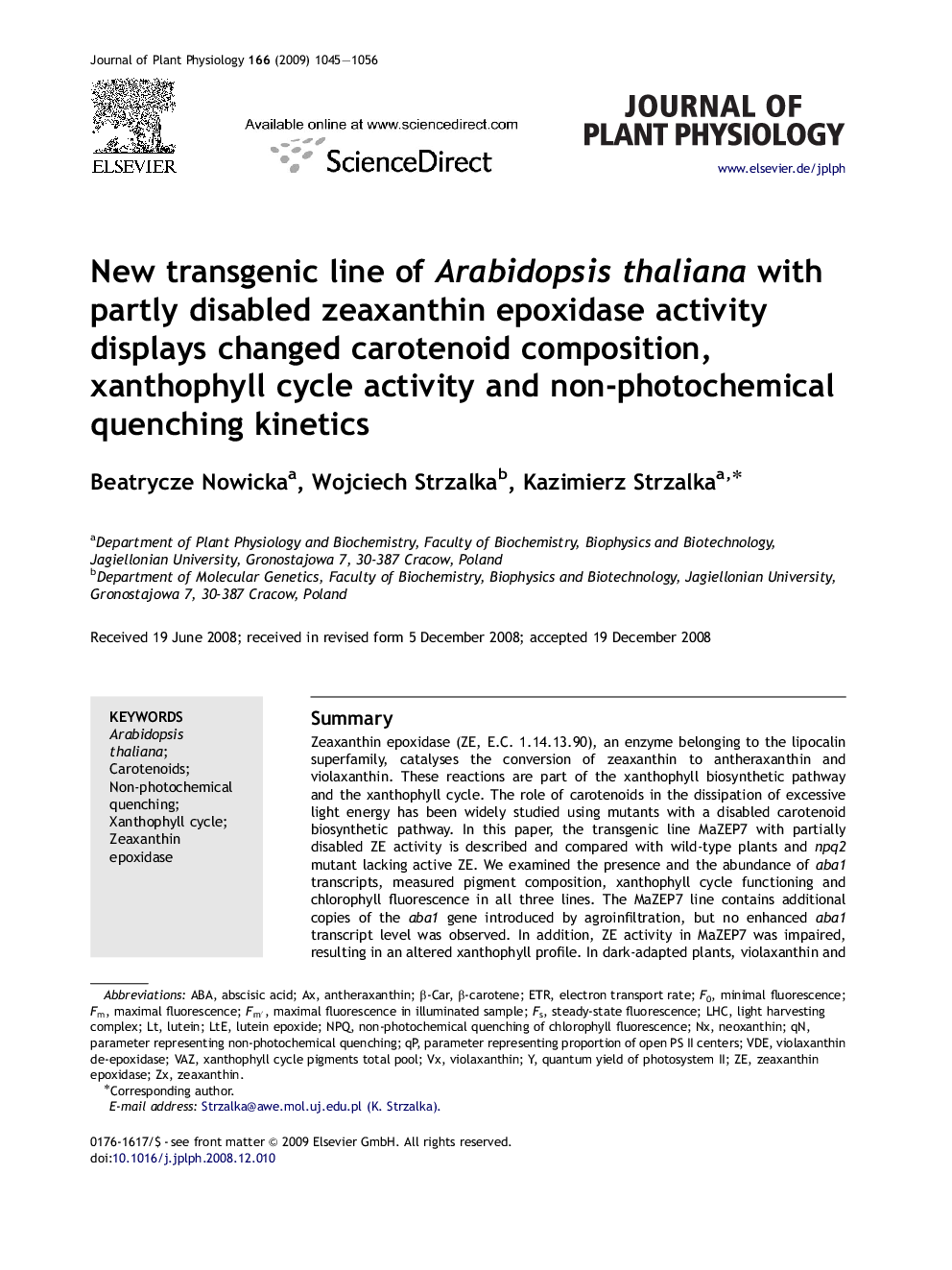| Article ID | Journal | Published Year | Pages | File Type |
|---|---|---|---|---|
| 2056792 | Journal of Plant Physiology | 2009 | 12 Pages |
SummaryZeaxanthin epoxidase (ZE, E.C. 1.14.13.90), an enzyme belonging to the lipocalin superfamily, catalyses the conversion of zeaxanthin to antheraxanthin and violaxanthin. These reactions are part of the xanthophyll biosynthetic pathway and the xanthophyll cycle. The role of carotenoids in the dissipation of excessive light energy has been widely studied using mutants with a disabled carotenoid biosynthetic pathway. In this paper, the transgenic line MaZEP7 with partially disabled ZE activity is described and compared with wild-type plants and npq2 mutant lacking active ZE. We examined the presence and the abundance of aba1 transcripts, measured pigment composition, xanthophyll cycle functioning and chlorophyll fluorescence in all three lines. The MaZEP7 line contains additional copies of the aba1 gene introduced by agroinfiltration, but no enhanced aba1 transcript level was observed. In addition, ZE activity in MaZEP7 was impaired, resulting in an altered xanthophyll profile. In dark-adapted plants, violaxanthin and neoxanthin levels were lower than in wild-type plants, whereas antheraxanthin and zeaxanthin levels were considerably higher. The presence of lutein epoxide was also observed. Violaxanthin levels changed only minimally during light exposition, whereas antheraxanthin was converted to zeaxanthin and there was no epoxidation during the course of the experiment indicating disturbed xanthophyll cycle functioning. The amounts of carotenoids and chlorophylls on a dry weight basis and chl a/chl b ratio were similar in all lines. The presence of epoxidated pigments in MaZEP7 plants indicates that epoxidation occurs, but it is likely very slow. Chlorophyll fluorescence measurements showed that the dependence of electron transport rates on light intensity for the MaZEP7 line resembled the npq2 mutant. Kinetic measurements showed that the MaZEP7 line exhibited very rapid induction and a high steady-state value of non-photochemical quenching.
